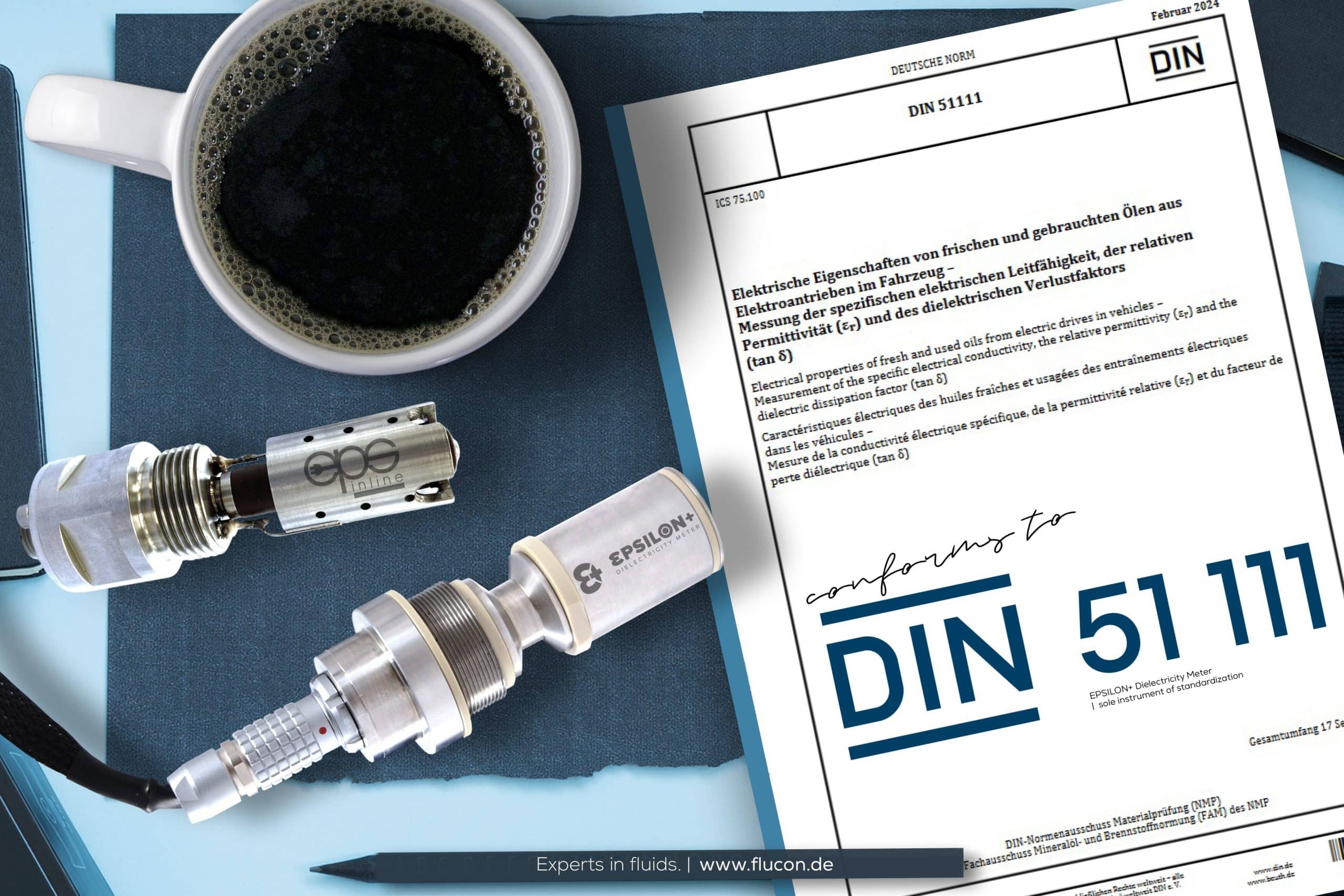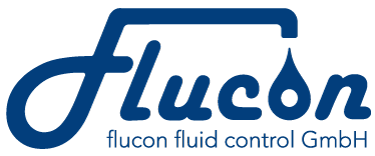
The DIN 51111:2024-02 dielectric test standard will be published in February.
After more than five years of standardization work, the time has finally come: the DIN 51 111 method is published in edition 02-2024. Under the title “Electrical properties of fresh and used oils from electric drives in vehicles – Measurement of the specific electrical conductivity, the relative permittivity (εr) and the dielectric dissipation factor (tan δ)”, a precise description of the test procedure is given, for which flucon’s EPSILON+ Dielectricity Meter is fully compliant.
Electrical lubricant analysis according to flucon’s dual test approach: Creating facts for oils and greases used for electric drives
The precise dielectric measurement of lubricants has been a core competence of flucon for many years.
 The in-house developed EPSILON+ laboratory device uses a special tubular capacitor as a measuring cell to determine the specific electrical resistance and the electrical conductivity, the dielectric constant (relative permittivity) and the dissipation factor at variable frequency.
The in-house developed EPSILON+ laboratory device uses a special tubular capacitor as a measuring cell to determine the specific electrical resistance and the electrical conductivity, the dielectric constant (relative permittivity) and the dissipation factor at variable frequency.
As all of these parameters are temperature-dependent, an automatic thermostat is used. According to the standard, the three test temperatures 50°C, 100°C and 150°C are provided for measuring oils, which are set by a separate measuring mode in the fluconEPS software with the shortest possible measuring and holding time.

While the ohmic value of the conductivity is determined at 20 Hz, the permittivity as a capacitive value is measured at 100 kHz. The dissipation factor is given with reference to the mains frequency (50/60 Hz).
Unlike conventional dissipation factor tests for insulating oils, e.g. in accordance with DIN 60247, the new DIN 51 111 method focuses on the analysis of moderately conductive substances in the range of 1 nS/m to 500 μS/m.
The EPSILON+ exceeds this requirement and resolves up to 20 pS/m.
A non-destructive measuring method with low alternating voltages is used, which, unlike the unsuitable high-voltage tests, does not cause any electrolytic loading of the 8 ml sample.
The new standard can be obtained from Beuth as a PDF or as a printed copy via the following link:
https://www.beuth.de/en/standard/din-51111/374601242
